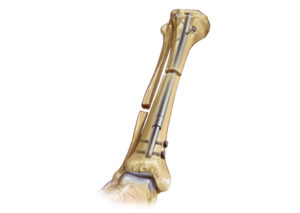Key pointers:
- Why ankle sprains aren’t always “just a twist”
- The three grades of ankle sprains (mild, moderate, severe)
- Signs that suggest a torn ligament or hidden fracture
- When swelling, bruising, or pain should raise concern
- How orthopaedic tests (X-ray, MRI) help confirm the diagnosis
- Risks of untreated sprains: chronic pain, instability, arthritis
- Recovery approaches: rest, bracing, physiotherapy, or surgery if needed
- Prevention tips: footwear, strength, and balance training
- Why early consultation with an orthopaedic surgeon matters
A Common but Often Overlooked Injury
Ankle sprains are among the most frequent injuries, especially for those who are active in sports, running, or simply rushing down a flight of stairs. Many people brush them off as a minor twist, expecting the swelling and pain to disappear after a few days of rest. But not every ankle sprain is the same. Some can involve torn ligaments, cartilage injury, or even small fractures that, if left untreated, may lead to long-term problems like chronic pain or ankle instability. That’s why it’s important to know when a sprain might be more than just a simple twist.
Grades of Ankle Sprains
Doctors classify ankle sprains into three grades depending on the severity of the ligament damage:
- Grade 1 (Mild): The ligament is stretched but not torn. There may be mild swelling and discomfort, but you can usually still walk. With proper rest, this type often heals within a couple of weeks.
- Grade 2 (Moderate): The ligament is partially torn. You may notice more significant swelling, bruising, and pain when putting weight on the foot. Walking may be difficult without support. Recovery can take several weeks and may need structured physiotherapy.
- Grade 3 (Severe): The ligament is completely torn. The ankle may feel very unstable, with severe pain, swelling, and an inability to bear weight. This type may require a brace, longer rehabilitation, or in some cases, surgery.
Knowing these grades helps you understand why not all sprains should be treated the same way.
Warning Signs: When It Might Be More Serious
Sometimes what feels like a sprain could actually be something more, such as a ligament tear, tendon injury, or even a fracture. Watch out for these signs that mean it’s time to see an orthopaedic specialist:
- Intense pain that does not ease with rest or over-the-counter medication
- Significant swelling and bruising appearing within hours of the injury
- Inability to walk or put weight on the injured foot
- A popping sound at the time of injury
- Visible deformity or misalignment of the ankle
- Pain that lingers beyond a week without improvement
If any of these are present, it’s best not to “walk it off.” Ignoring these red flags can worsen the injury and delay recovery.
Why Orthopaedic Evaluation Matters
An orthopaedic check is not just about confirming a sprain, it helps rule out other injuries that may look similar but require different treatment. X-rays or MRI scans can identify fractures, cartilage injuries, or ligament tears that may otherwise go unnoticed.
Early and accurate diagnosis is crucial. Without proper treatment, repeated sprains can weaken the ankle, leading to chronic instability. This increases the risk of re-injury and long-term arthritis in the joint.
Orthopaedic specialists can recommend the right management plan, from rest, bracing, and physiotherapy to surgical options if necessary. Structured rehabilitation also helps restore balance, strength, and flexibility, reducing the risk of future ankle problems.
Recovery and Prevention
Treatment often depends on the severity of the sprain, but some general steps include:
- R.I.C.E. method (Rest, Ice, Compression, Elevation) in the initial phase
- Use of crutches, braces, or supportive footwear for moderate to severe injuries
- Physiotherapy to restore mobility and strengthen supporting muscles
- Balance training to prevent future sprains
For prevention, proper footwear, warming up before activity, and strengthening exercises for the ankle and calf muscles can help keep your joints stable and resilient.
When in Doubt, Get It Checked
An ankle sprain may seem like a minor setback, but without the right care, it can lead to bigger issues down the road. If you’re unsure whether your injury is just a simple twist or something more, don’t take chances, seek an orthopaedic evaluation.
Getting the right diagnosis and treatment early not only helps you recover faster but also protects your long-term joint health.
Orthopaedic Care with Dr. Sarbjit Singh
At the Centre for Advanced Orthopaedics, Dr. Sarbjit Singh provides comprehensive care for ankle sprains and related injuries. With experience in both adult and paediatric orthopaedics, as well as a focus on foot and limb conditions, Dr. Singh ensures patients receive the right diagnosis and treatment to restore stability and function.
If you’ve had an ankle injury that isn’t improving, or you’re worried it may be more than just a sprain, don’t wait.
Getting the right diagnosis and treatment early not only helps you recover faster but also protects your long-term joint health.











